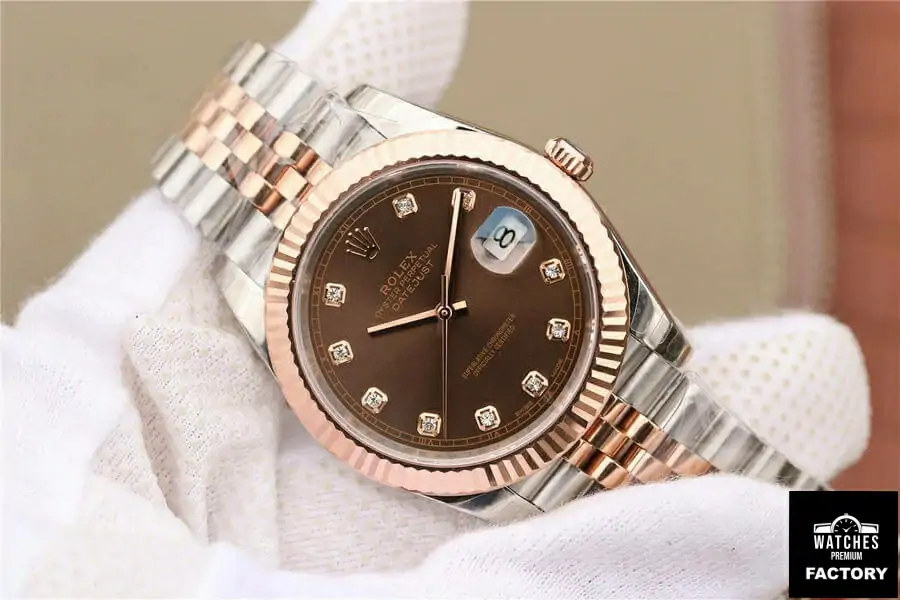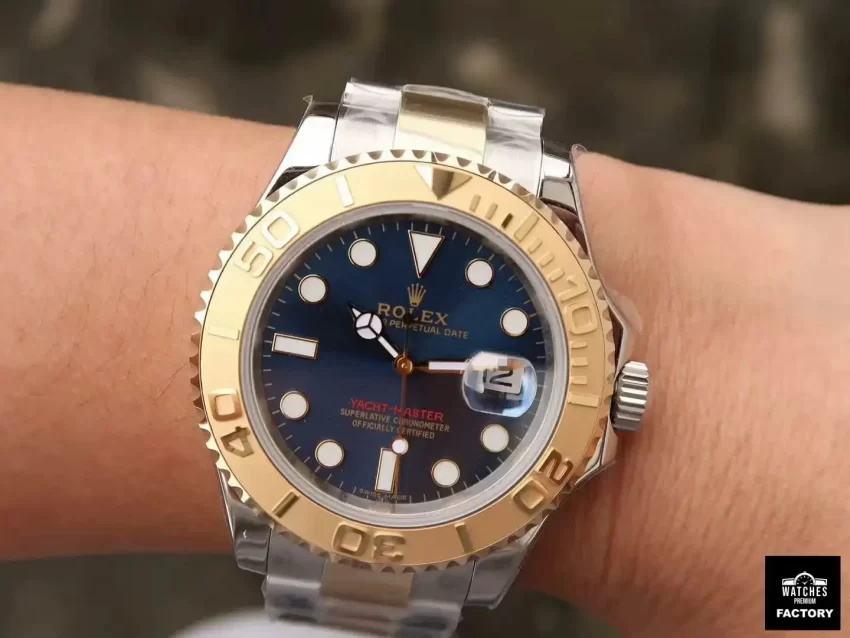While not every Rolex model offers this decision, the Oyster and Jubilee are the brand’s most popular bracelet styles, often featured on iconic models like the replica Rolex GMT-Master II, Datejust, and Sky-Dweller. Understanding the distinctions between these two options can help you make an informed decision, especially since similar bracelet designs are also offered by other brands.

Jubilee: The Elegant Choice
Introduced in 1945 on the Datejust during Rolex’s 40th anniversary, the Jubilee bracelet is a five-link design with brushed outer links and polished inner links, creating a luxurious, intricate appearance. Its shorter, more numerous links give it a refined look, making it a popular choice for the Datejust and other dressier models. Though originally designed for formal wear, the Jubilee is also available on sportier Rolex models, adding a touch of elegance even to watches typically associated with adventure.
Currently, the Jubilee is an option on the Datejust, GMT-Master II, and Sky-Dweller. For those seeking a full-gold Jubilee, the Sky-Dweller is your only option, introduced by Rolex at Watches and Wonders 2025. The Datejust and GMT-Master II offer Jubilees in steel and two-tone configurations, depending on the model.
Oyster: The Sportier, Everyday Option
The Oyster bracelet, patented by Rolex in the 1930s, features a sturdy three-link construction that embodies the brand’s tool-watch heritage. Often associated with Rolex’s sportier models, the Oyster bracelet is available in both brushed and polished finishes, depending on the model. For instance, the Submariner features fully brushed links, enhancing its rugged appeal, while the GMT-Master II and Daytona incorporate polished center links, adding a hint of luxury.
Known for its versatility, the Oyster bracelet complements a wide range of Rolex watches, from the utilitarian Submariner to dressier options like the clone Rolex Datejust and Sky-Dweller. It’s Rolex’s most common bracelet style, seen on numerous models including the Explorer, Oyster Perpetual, Air-King, Sea-Dweller, and Deepsea. However, it’s not available on the Day-Date and 1908 models, which are fitted with either the President bracelet or a leather strap.

Key Differences: Style, Comfort, and Cost
Style: The Jubilee offers a dressier, more complex look, while the Oyster is known for its straightforward, sporty aesthetic.
Comfort: While both bracelets are comfortable, the Jubilee’s smaller, more flexible links allow it to contour better to the wrist, often cited by Rolex enthusiasts as a primary reason for choosing it.
Cost: Due to its more complex design, the Jubilee is slightly more expensive than the Oyster, with a typical price difference of around $200 on models like the steel GMT-Master II.
Consider the Clasp
Rolex clasps vary depending on the model and bracelet, which is an important aspect to consider. The Jubilee on the replica Rolex Datejust and Sky-Dweller comes with the basic Oysterclasp, while the GMT-Master II Jubilee features the more secure Oysterlock clasp. Oyster bracelets on the brand’s “Professional” models often include the Oysterlock, and those on diving watches like the Submariner and Sea-Dweller feature the Glidelock clasp, offering convenient micro-adjustments.
Choosing between the Oyster and Jubilee comes down to personal preference, comfort, and the style you want for your Rolex. Each bracelet brings its own character to the watch, making it either a refined statement piece or a versatile, everyday accessory. No matter which you choose, both bracelets are enduring icons of Rolex’s design legacy.
